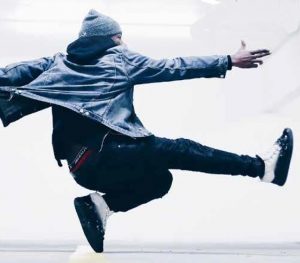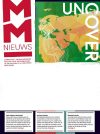
Imagine that the country where you have lived your entire life is no longer safe because of the danger and violence that is taking place. You decide to flee the country and make a life-threatening journey in degrading conditions to get to safety. After a trip of days without a toilet, food and enough space you arrive in an unknown country where everything is different. The language. The people. The rules. You have no money. No food. No house and no friends to help you. What would you do?
In recent years, Europe has experienced the largest influx of refugees, also called newcomers. This development has often been the subject of discussion in our country. From 2015, around 100.000 asylum seekers registered in the Netherlands (VluchtelingenWerk, 2018). Many newcomers experience problems to a certain extent in letting go of the familiar and feeling at home in a new social and cultural environment. The stress that the integration process entails can lead to extreme feelings of loneliness. Many newcomers cannot talk to anyone, are unemployed at home and receive little support to start a new life. Because they do not speak Dutch or English, they cannot communicate with their environment, they do not understand municipal forms and they often cannot participate in activities in their neighborhood.
Bente Spooren:
People are involved as a designer and artist, not as a refugee.This can lead to isolation, as a result of which participation and integration stagnate and the feeling of inclusion is often lacking. Now, the emphasis within this subject lies mainly on integration through orientation towards Dutch society, language education and individual counseling (Verhagen, 2019). However, little is known about the leisure activities of newcomers and their needs. According to various experts, creativity and leisure have a positive effect on participation, inclusion and the reduction of negative feelings in several areas.
The working mechanisms
Kennisplatform Integratie & Samenleving (KIS) conducted research into the working mechanisms for newcomers within creativity, leisure and cultural interventions. Cultural activities have a connecting effect. Dance and music can release endorphin and oxytocin, substances that can contribute to social connection. This is important for status holders, because they have little or no connection with Dutch people. Other working elements according to KIS are improving the language, making meaningful contacts and expanding the social network. The freedom that art, creativity and leisure offer to create and to unfold new sides of yourself are associated with empowerment and the strengthening of one’s own identity. It gives newcomers the opportunity to share their skills, talents and knowledge and proofs what they can do. This proof is needed to increase opportunities in the labor market and to be included in groups and networks. It also helps newcomers to crawl out of their shell so that they learn to present themselves better in the labor market (Angela van Dijk, 2019). Thami Schweichler of Makers Unite says ‘Creativity is the focus point. Being different isn’t. People are involved as a designer and artist, not as a refugee. In the meetings, too, they are an artist and not a refugee.’ Equality in the creative process, the power of the individual person and connecting with other people are important aspects for the participation of newcomers and to reduce feelings of loneliness.
Creativity in primary schools
 Kiet Engels, teacher at primary school Het Palet in Hapert believes that creativity can make a major contribution to the development of newcomers and to strengthen the participation in our society. Amongst the pupils she teaches, she often notices positive changes. “Creativity helps children to cope with changes and deal with feelings and experiences. You have to create an environment where they feel like it is okay to play, explore and discover.” Together with a music teacher and the pupils, she creates songs to learn the Dutch language in a creative way. Besides that, there are lessons in media and film in which the children learn to stand and present in front of a camera. “By linking creativity, language and informative elements, children develop and grow in many areas. You kill seven birds with one stone!” (Engels, 2019).
Kiet Engels, teacher at primary school Het Palet in Hapert believes that creativity can make a major contribution to the development of newcomers and to strengthen the participation in our society. Amongst the pupils she teaches, she often notices positive changes. “Creativity helps children to cope with changes and deal with feelings and experiences. You have to create an environment where they feel like it is okay to play, explore and discover.” Together with a music teacher and the pupils, she creates songs to learn the Dutch language in a creative way. Besides that, there are lessons in media and film in which the children learn to stand and present in front of a camera. “By linking creativity, language and informative elements, children develop and grow in many areas. You kill seven birds with one stone!” (Engels, 2019).
The perks of De Voorkamer
Pim van der Mijl, founder of De Voorkamer – a community center and creative place in Utrecht where newcomers and local residents come together – can only respond positively to the effects leisure and creativity have on newcomers. De Voorkamer gives newcomers the opportunity to develop their skills and talents and to work together with local professionals. For example, Adel is active as a host of the ‘Arabic Language Café’, he organizes events and is an actor. Zaynab does the catering for the organization and is co-organizer of ‘Turning Tables’ and Anan is a great musician who often plays at events and is co-organizer of ‘On the Spot’. The participants are seen as individuals, which is an important aspect to create new relationships, overcome stigmatization and bring attention to diversity in the Netherlands. The starting point of De Voorkamer is to first generate involvement of the participants in order to ultimately ensure that they can participate in society in a self-assured, proud and active manner (Mijl, 2019).
Action research regarding integration of Newcomers
Lecturer and researcher Marco Bevolo and Anique Gerrits of Breda University of Applied Sciences wrote an action research case study in which they investigated the challenges and opportunities for newcomers in the field of social participation. Anique Gerrits’ goal was to consult on leisure opportunities for integration of these newcomers, namely 98 Eritrean men who live in Nijmegen North. The aim was to give them a voice, and therefore enable them to express themselves. This resulted in a tailor-made framework, capturing insights regarding their integration process. The framework contained a participant observation and two design thinking tools: a graffiti wall and picture cards. The graffiti wall entailed the question ‘Describe in one sentence how you feel about the new inhabitants on the Griftdijk’ and was clustered into the categories ‘welcoming’ and ‘less welcoming’. The goal of this question was to collect anonymous opinions and record citizenship initiatives in Nijmegen North. The picture cards included a sheet of paper with pictures regarding several leisure activities. The newcomers were requested to choose pictures that matched their interests. Key findings of this study where that soccer, fitness and clubbing were mostly preferred by the Eritrean newcomers. For them, leisure activities are a natural way to promote inclusion. However, they are often denied entry and therefore discriminated against, preventing them from taking part in leisure opportunities towards integration and participation. The newcomers were assessed as being excluded from activities because of their budget, post-traumatic symptoms or experiences and ethnic diversity and cultural differences with the lifestyle of inhabitants in Nijmegen North. Limiting their access to entertainment might be seen as a form of deprivation of a fundamental opportunity for self-expression, co-creation and therefore inclusion (Gerrits, 2018).
Bente Spooren:
By linking creativity, language and informative elements, children develop and grow in many areas.Given these points, it can be said that leisure and creativity can ensure better integration and reduce feelings of loneliness. It contributes to personal growth, helps in making social connections and increases the network. Besides that, it can also help to better deal with negative experiences from the past. We often do not see creativity, art and leisure as something that is useful for our development and future, but as an intermediate activity. Integration and inclusion can only be optimized if we look at all aspects. This means, that we should also look at the personal and social development. Leisure is nowadays used to derive your own identity. And let that exactly be what all newcomers are doing here; creating their own identity in our society.
References
- Dijk, A. v., Grinsven, S.v., Groot, N. d., Haan, J. d., Kluft, M. (2019). Werkzame mechanismen culturele interventies statushouders. Kennisplatform Integratie & Samenleving, LKCA, Movisie.
- Engels, K. (2019, February). Personal communication. Hapert.
- Gerrits, M. B. (2018). Together we stand stronger. Trading & Francis group.
- Mijl, P. v. (2019). About. Retrieved from De Voorkamer: https://devoorkamer.org/about/
- Verhagen, W. (2019, March 18). Personal communication. Eindhoven.
- VluchtelingenWerk (2018). Vluchtelingen in getallen. VluchtelingenWerk Nederland.
NB: dit artikel verscheen eerder in het magazine Uncover ‘Leisure for a better world’ van Breda University of Applied Sciences.
